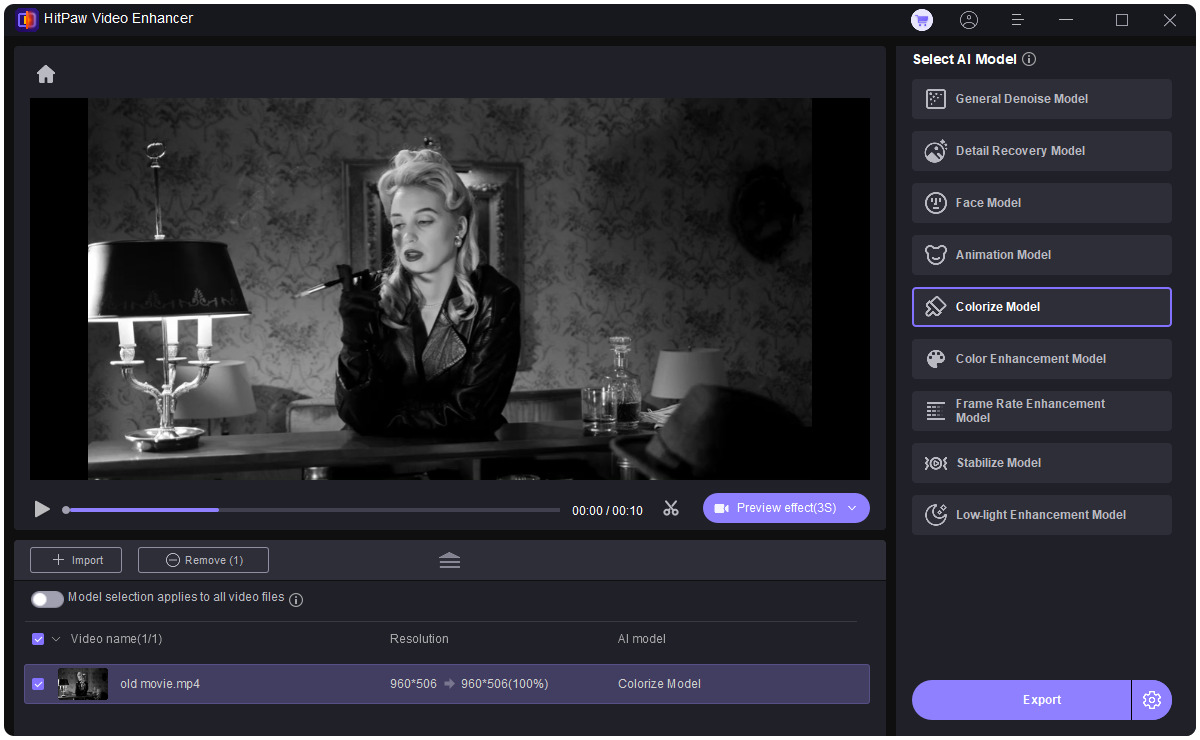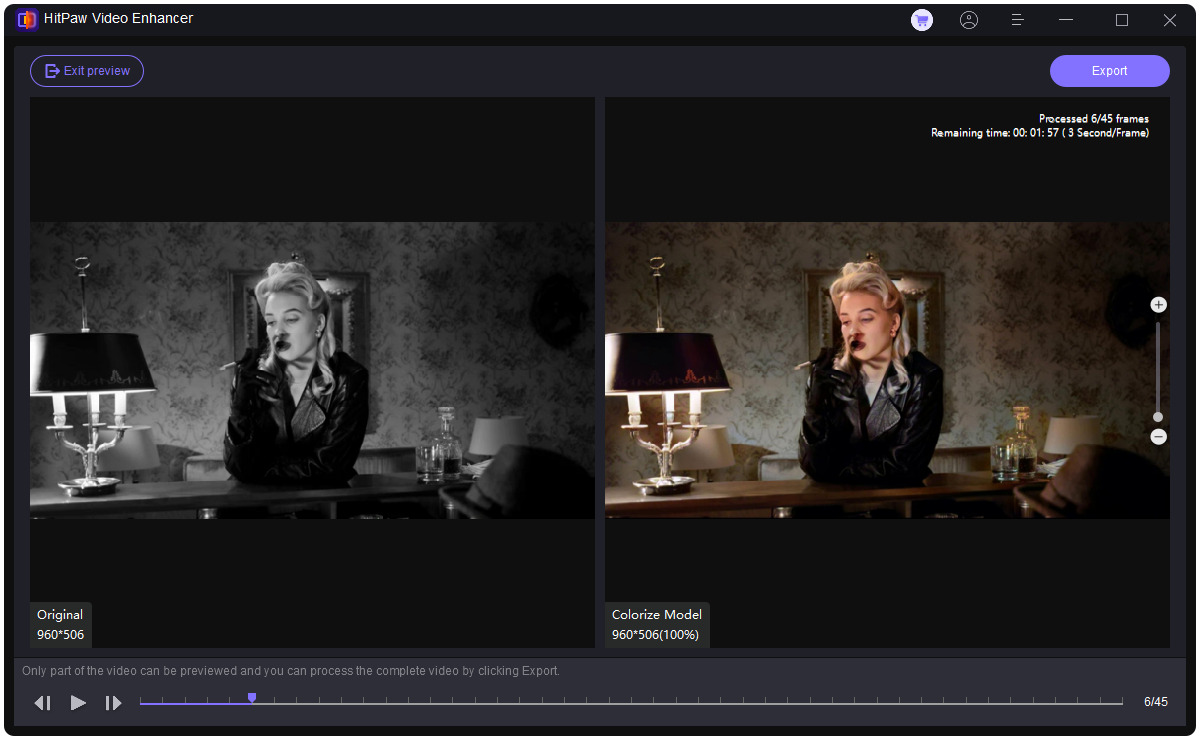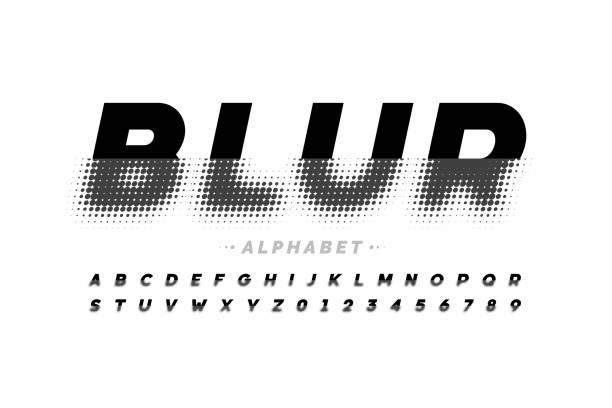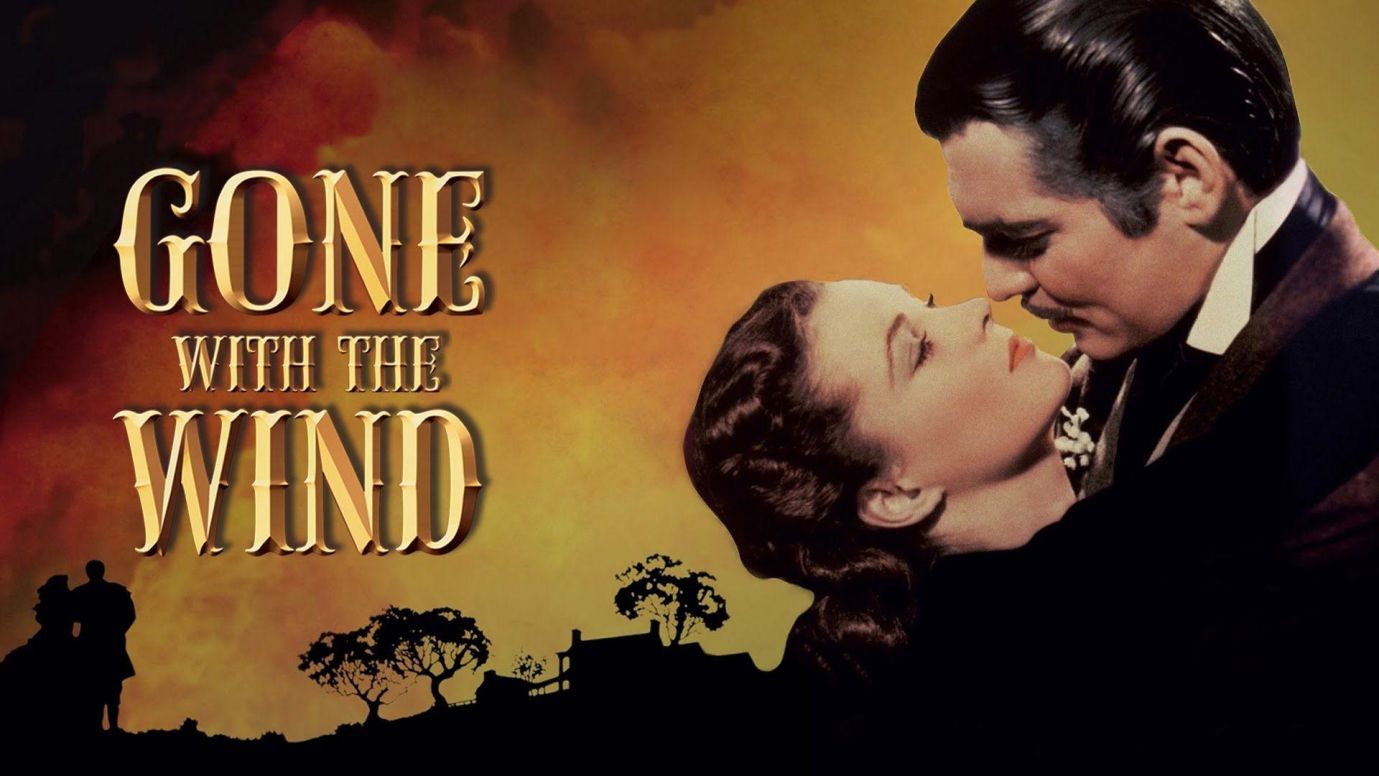Watch Night of the Living Dead in Colour in 4K
Experience the horror classic like never before with "Night of the Living Dead 3D." This iconic film takes viewers on a chilling journey into a world overrun by zombies. Directed by Jeff Broadstreet, it offers a unique blend of horror and depth perception, bringing new dimensions to the undead genre. Prepare for a spine-tingling adventure as you delve into this immersive 3D rendition of a timeless tale of survival against the living dead.
Part 1. The Evolution of Night of the Living Dead
Impact on the Horror Genre:
"Night of the Living Dead," directed by George A. Romero and released in 1968, revolutionized the horror genre in several profound ways. It introduced the concept of modern zombies — reanimated corpses driven by an insatiable hunger for human flesh — which became a staple in horror storytelling. The film's gritty, realistic portrayal of violence and social commentary on race and society challenged traditional norms, paving the way for a new wave of horror cinema that explored darker, more visceral themes. Its influence can be seen in countless subsequent films, TV shows, and literature, solidifying its status as a cult classic and shaping the trajectory of horror for decades.
Transition from Black and White to Color:
The transition from black and white to color in the film industry marked a significant evolution in visual storytelling, spanning several decades and influenced by both technological advancements and artistic preferences.
1. Technological Advancements:
- Early Colour Processes: In the early 20th century, colour films used various processes like Technicolor, which involved shooting with multiple strips of film and complex dye transfer techniques. These processes were expensive and required specialized equipment.
- Advancements in Color Film Stock: Over time, improvements in colour film stock made colour cinematography more accessible and cost-effective. Single-strip colour film stocks like Eastmancolor became widely adopted, simplifying the production process.
2. Artistic and Aesthetic Choices:
- Creative Expression: Filmmakers began to use color as a tool for artistic expression. Colour allowed for more vibrant, nuanced storytelling, enhancing mood and atmosphere in ways that black and white could not achieve.
- Genre-specific Uses: Different genres utilized colour differently. Dramas and epics often used colour to heighten emotional impact and spectacle, while horror and noir films sometimes retained black and white for its atmospheric and stylistic effects.
3. Audience Expectations and Market Trends:
- Audience Preference: As colour television became more prevalent in the 1950s and 1960s, audiences increasingly expected colour films in theatres. This influenced studios to invest in colour productions to attract viewers.
- Competitive Edge: Colour films provided a competitive edge in a growing market. Studios and filmmakers sought to differentiate their productions and appeal to broader audiences by offering visually striking colour cinematography.
4. Impact on Filmmaking and Industry Standards:
- Standardization: By the 1970s, colour had largely become the standard for mainstream filmmaking. Advances in colour technology and post-production techniques continued to refine colour reproduction and quality.
- Creative Freedoms: Filmmakers gained more creative freedoms with colour, experimenting with palettes, contrasts, and lighting to enhance storytelling and thematic elements.
Part 2. The Impact of Color on Horror Films
Significance of Color in Enhancing Atmosphere and Mood:
Color is a potent tool in horror films, profoundly influencing atmosphere, mood, and audience engagement. Unlike black and white, which relies on contrasts and shadows, color enhances the visceral and emotional impact of horror narratives.
- Setting Tone and Emotion: Colors can set the tone from the outset, establishing a foreboding atmosphere or amplifying suspense. For instance, dark hues like deep blues or greens evoke a sense of dread, while stark contrasts between light and shadow create tension.
- Symbolism and Psychological Impact: Certain colors carry symbolic meanings that heighten psychological tension. Red, often associated with blood and danger, intensifies fear and urgency. Meanwhile, muted or desaturated palettes can evoke feelings of bleakness or despair, enhancing the sense of hopelessness in horror scenarios.
- Enhancing Visual Dynamics: Color adds depth and dimension to horror scenes, making environments feel more immersive and characters more tangible. This heightened realism intensifies the audience's emotional connection and amplifies the impact of frightening or suspenseful moments.
Color in "Night of the Living Dead":
In George A. Romero's "Night of the Living Dead" (1968), the use of black and white initially served budgetary constraints but also enhanced the film's eerie and stark atmosphere:
- Contrasts and Shadows: The black and white cinematography accentuated contrasts between light and dark, emphasizing the isolation and dread felt by the characters trapped in a farmhouse besieged by zombies.
- Transition to Color: Various adaptations and remakes of the film, such as Tom Savini's 1990 version, introduced color to modernize the visuals while preserving the original's horror elements. Colorization brought a new layer of realism to the visceral gore and decay associated with the undead, intensifying the film's impact on audiences.
Part 3. Pro-tip: Enhancing the Viewing Experience of Night of the Living Dead
Enhance your Night of the Living Dead in color viewing with HitPaw VikPea (formerly HitPaw Video Enhancer), an AI-powered tool that transforms video quality. It can colorize video, upscale videos up to 8K resolution, and repair damaged files. With a user-friendly interface, it offers easy navigation and previewing without watermarks. Elevate your cinematic experience and restore clarity and detail to every frame effortlessly with HitPaw VikPea.
Features
- AI-Powered Enhancement: Utilizes AI algorithms to upscale videos to stunning 8K resolution, improving clarity and detail.
- Video Repair: Fixes and repairs damaged or degraded video files to restore optimal viewing quality.
- New AI Models: Includes Frame Interpolation Model for smoother motion and Stabilize Model for reducing shaky footage.
- User-Friendly Interface: Simple and intuitive interface for easy navigation and operation.
- Preview Without Watermarks: Allows previewing enhanced videos without intrusive watermarks, ensuring a seamless viewing experience.
Steps
-
Step 1.Download and install the HitPaw VikPea on your computer.
-
Step 2.Upload the video you want to enhance the software.

-
Step 3.Simply choose “Colorize Model”, it will help you upscale black and white video to color.

-
Step 4.Click on Preview to process the video and wait for a few seconds. Once satisfied, click the Export button to save the video file to your computer.

You give a modern and alluring touch to your favorite old videos with just a few clicks.
Learn More about HitPaw VikPea
Would Like to Watch Movies Offline?
Some people would like to download movies and enjoy offline, you will be needing HitPaw Univd for this.
HitPaw Univd - All-in-one Video Solutions for Win & Mac
Secure Verified. 254,145 people have downloaded it.
- User-Friendly Interface: Even if you're new to audio conversion, HitPaw's interface is easy to navigate.
- Supports Numerous Formats: HitPaw goes beyond OGG to MP3 conversion, allowing you to convert between various audio and video formats.
- Additional Features: HitPaw offers basic audio editing tools, batch processing, and audio enhancement options.
Secure Verified. 254,145 people have downloaded it.
Part 4. FAQs of Night of the Living Dead in Colour
Q1. Can I watch "Night of the Living Dead" in color?
A1. Yes, there are colorized versions available, including official releases and fan-made adaptations. These versions use modern digital colorization techniques to bring new life to the classic black-and-white film.
Q2. Who directed the colorized version of "Night of the Living Dead"?
A2. Various directors and production companies have undertaken colorization projects. However, the original film was directed by George A. Romero in 1968.
Q3. Is the colorized version of "Night of the Living Dead" faithful to the original?
A3. Colorization efforts aim to respect the original film while enhancing visual appeal. Purists may prefer the original black-and-white version, but colorization can provide a fresh perspective for new audiences.
Conclusion
Experience "Night of the Living Dead" in vibrant color with enhanced clarity and detail, bringing new depth to this iconic horror classic. Colorization revitalizes the film for modern audiences while preserving its chilling narrative. For optimal viewing, consider using HitPaw VikPea to upscale and enhance your copy of the film. Its AI-powered tools ensure superior video quality, making every scene more vivid and immersive.







 HitPaw Univd (Video Converter)
HitPaw Univd (Video Converter)  HitPaw Watermark Remover
HitPaw Watermark Remover  HitPaw VikPea (Video Enhancer)
HitPaw VikPea (Video Enhancer)



Share this article:
Select the product rating:
Daniel Walker
Editor-in-Chief
My passion lies in bridging the gap between cutting-edge technology and everyday creativity. With years of hands-on experience, I create content that not only informs but inspires our audience to embrace digital tools confidently.
View all ArticlesLeave a Comment
Create your review for HitPaw articles